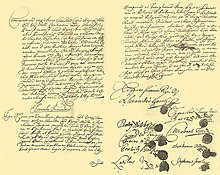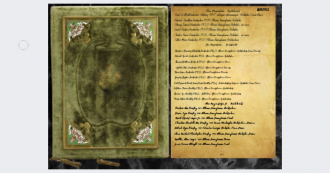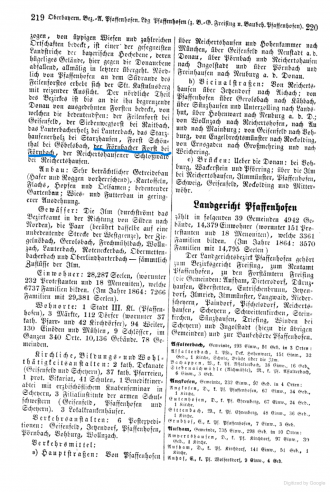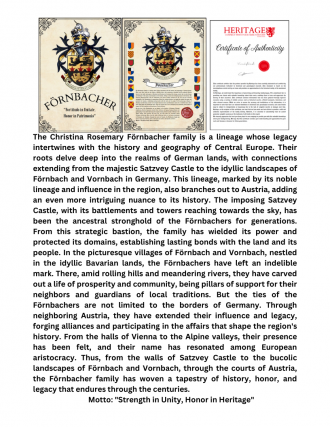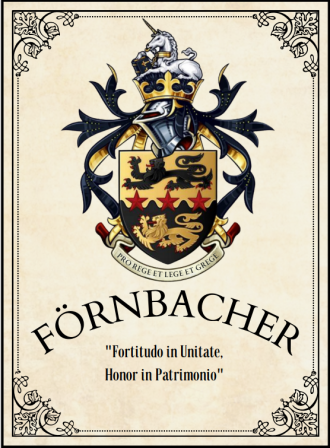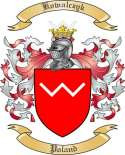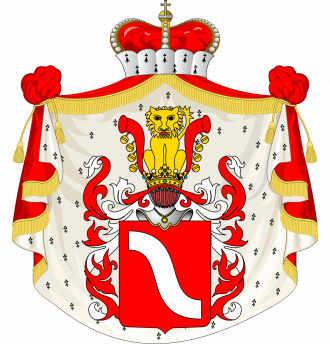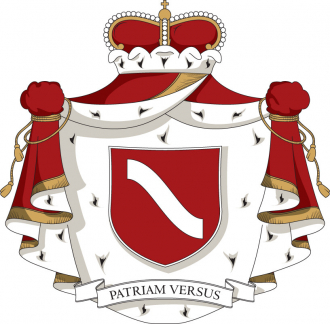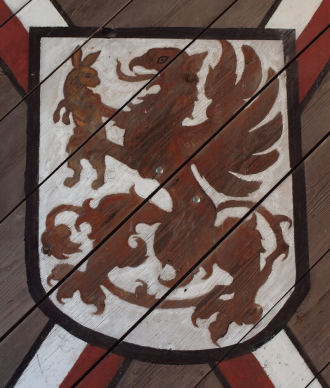Fornbacher Family History & Genealogy
Fornbacher Last Name History & Origin
AddSummary
Förnbacher Parent House Group was that of the Luitpoldinger's In the last phase of the East Frankish Carolingian Empire, the early medieval Luitpoldinger Dynasty rose to become one of the leading families of the Frankish Imperial Aristocracy and temporarily achieved a king-like position in the tribal duchy of Bavaria in the 10th century. The descendants of the first duke, Arnulf, were also known as Arnulfingers. Die Аи Herzogtums Ва НЕТ. Beginnings to Margrave Luitpold Bavarian special royalty under Arnulf Descent and end of the Luitpoldinger Beginnings to Margrave Luitpold A possible relationship to the Carolingians and the Huosi is disputed in research. Various theories on this are widely related to the mother of Emperor Arnulf of Carinthia, Liutswinde. Indications of possible ancestors of the first confirmed Luitpoldinger, Margrave Luitpold, are given by various sources of the Freising diocese. In 807, Count Liutpald appears for the first time, whose county was located on the lower Amper. It is not certain whether this Liutpald already belonged to the Frankish high nobility. Presumably, he only received his county by marrying into an important family living in the Freising area. In 827, various donations were made from Allershausen to the Bishopric of Freising, with Herigolt's relative also mentioned as a witness. [2] In 842 this Liutpald (I.) is mentioned for the last time. In the generation after him, after Ernestus I and Ernestus II, his sons Liutpald (II) and Heriolt appear [3]. In the reconstructed ancestral line, the unknown son of Liutpald II (nothing is known about the family in the second half of the 9th century) would then be the father of Margrave Luitpold, the namesake of the family. What is certain is that in 893 Luitpold was appointed Margrave of Carantania and Upper Pannonia (territories in present-day Austria and Hungary) by Emperor Arnulf, thus succeeding the Wilhelmines. Around 895, Luitpold acquired the counties of Donaugau and Nordgau around Regensburg and thus strengthened his leading position in the southeast of the empire. He was entrusted by the Carolingian emperors with tasks in Moravia and the repelling of the Hungarian threat, during which he was killed in the Battle of Pressburg in 907. Luitpold's brother-in-law Heriolt or Herigolt († after 895), who was married to his sister Rhinia, and his sons Albrich and Rafolt were bailiffs of Niederaltaich Abbey [4]. Bavarian special royalty under Arnulf [edit | edit source] Edit source] His son Arnulf the Evil was able to build on the foundations of the power Luitpold had laid and soon assumed the title of duke. In doing so, he was able to count on the support of the Bavarian nobility, who hoped to improve their position in this way. After a reorganization of the army, for which he also confiscated church property and gave it to his vassals, he was able to push the Hungarians back by 913 and obtained a contractual assurance from them that they would not invade Bavaria again. At the imperial level, Arnulf pursued a policy of autonomy in internal affairs and externally vis-à-vis the German kings Conrad I and Henry I. Arnulf did take part in Konrad's election. An intervention by Arnulf on behalf of his related dukes of Swabia against Conrad led to a prolonged conflict, in the course of which Arnulf temporarily fled to the Hungarians but was able to hold his own. Scholars have not yet clarified whether Arnulf allowed himself to be proclaimed anti-king after the death of Conrad, or whether he aspired to a special Bavarian kingship. In the Treaty of Regensburg in 921, however, Arnulf recognized Henry's suzerainty after battles with him. In return, Henry approved Arnulf's independent rule, which included the appointment of bishops, the convocation of synods, and the exercise of actual regalia (coinage, customs duties). In terms of foreign policy, he subjugated Bohemia and tried to obtain the Lombard crown for his son Eberhard in a (albeit unsuccessful) Italian campaign in 933/934, after the Lombard high nobility had offered it to him. Eberhard was designated by Arnulf as his successor in 935 with the consent of the nobility and became duke in 937. Descent and end of the Luitpoldinger[edit]Edit source] However, King Otto the Great deposed Eberhard in 938 after two campaigns in spring and autumn because of his resistance to him. The conflict probably arose because Otto did not continue the policy of accepting the Bavarian rights of his father Heinrich. Otto appointed Arnulf's younger brother, Berthold, as Duke of Bavaria after the latter had renounced the exercise of the important right of appointing bishops and perhaps also the administration of the imperial estate in Bavaria. Berthold's policy was loyal to the empire and the king. In 943 he defeated the Hungarians at Wels and thus repelled the Hungarian invasions for some time. After Berthold's death, it was not his son, Henry III who was enfeoffed with the duchy, but Henry, Otto's brother, who had married Judith, a daughter of Arnulf, in 937. The Luitpoldingers, who had been passed over, were left with only the office of Count Palatine, and Arnulf (II), another son of Duke Arnulf, his son Berthold, and his cousin Herold, the Archbishop of Salzburg, took part in the Liudolfine uprising. Arnulf was killed in a battle near Regensburg in July 954, his son tried in vain to ally himself with the Hungarians. Herold was captured and deposed at the Battle of Mühldorf in 955. In 983, Henry III, a Luitpoldinger, was able to return to the Bavarian duke's throne. However, in 985 he had to give way to Henry the Quarrelsome, who had reconciled with Otto. Henry III was compensated for this with the Duchy of Carinthia, to which the Marches in Italy, which had been administered from Bavaria since 952, were also added. With his death in 989, the reliably verifiable male line of the Luitpoldinger came to an end. A probable relationship to the Luitpoldingers is to the so-called Babenbergs, where the name Luitpold occurs in every generation and the rich property in Bavaria makes a direct relationship in the male line likely. [5] Since Luitpald/Leopold was practically the leading name of the Babenbergs, they were sometimes referred to as the younger Luitpoldingers. According to the European Pedigrees Volume I. [6] Leopold I. Count of the Donaugau and from 976 Margrave of the eastern Bavarian Mark – later Austria – a younger son of Duke Arnulf the Evil of Bavaria. According to this, the Babenbergs would be a younger branch of the Luitpoldingers. In addition to the leading name Luitpold and the margraviate in the Duchy of Bavaria, this is also supported by the fact that the sons of Margrave Leopold I held important positions: Henry and Adalbert were (984–1018) and (1018–1053) Margraves of Austria, Ernst was Duke of Swabia (1012–1015), Poppo was Archbishop of Trier (1016–1047) and Luitpold Archbishop of Mainz (1051–1059). A family connection to the Wittelsbachs, as claimed in the Großer Brockhaus,[7] has not been proven, but cannot be ruled out either. The theories that contemplate such a union assume that the future Count of Scheyern and ancestor of the Wittelsbachs, Otto, was a direct descendant of Berthold, Duke Arnulf's youngest son. The Förnbacher family is a lineage whose legacy intertwines with the history and geography of Central Europe. Their roots delve deep into the realms of German lands, with connections extending from the majestic Satzvey Castle to the idyllic landscapes of Förnbach and Vornbach in Germany. This lineage, marked by its noble lineage and influence in the region, also branches out to Austria, adding an even more intriguing nuance to its history. The imposing Satzvey Castle, with its battlements and towers reaching towards the sky, has been the ancestral stronghold of the Förnbachers for generations. From this strategic bastion, the family has wielded its power and protected its domains, establishing lasting bonds with the land and its people. In the picturesque villages of Förnbach and Vornbach, nestled in the idyllic Bavarian lands, the Förnbachers have left an indelible mark. There, amid rolling hills and meandering rivers, they have carved out a life of prosperity and community, being pillars of support for their neighbors and guardians of local traditions. But the ties of the Förnbachers are not limited to the borders of Germany. Through neighboring Austria, they have extended their influence and legacy, forged alliances and participating in the affairs that shape the region's history. From the halls of Vienna to the Alpine valleys, their presence has been felt, and their name has resonated among European aristocracy. Thus, from the walls of Satzvey Castle to the bucolic landscapes of Förnbach and Vornbach, through the courts of Austria, the Förnbacher family has woven a tapestry of history, honor, and legacy that endures through the centuries.
Motto: "Strength in Unity, Honor in Heritage"
Central figures in a remarkable social and political rise, the Fornbacher's went from being a virtually unknown family of the minor nobility to placing themselves at the epicenter of power in Germany and, consequently, in the Christian world in just a few decades. Through a combination of skill, advantageous circumstances, and frequently employing intrigues and unscrupulous tactics to achieve their aims, this saga yielded numerous political figures, a dozen cardinals, and some of the most iconic – albeit controversial – figures of the European Renaissance. This all transpired during the latter half of the 10th to the 19th century, a pivotal era marked by significant transformations that heralded the shift from the medieval era to the dawn of the Modern Age. The Fornbacher family is believed to have engaged in secretive dealings with influential entities, such as the DE Medici family, Wittlesbach Family, House of Wettin, House of Hohenzollern, Württemberg, Lippe, Oldenburg, Anhalt, Saksen-Coburg and Gotha, Waldeck-Pyrmont, Electors of Brandenburg, as well as their 1st cousins the Habsburgs of both Spain and Austria according to speculation. Reports indicate their involvement in transactions spanning the globe, resulting in the acquisition of extensive properties and strategic holdings as well as Emperors and Kings in the family. Additionally, there are suggestions that the family may have exploited migration routes to bolster their influence, navigating through challenging landscapes and waterways. Despite their public portrayal as affluent individuals, there are insinuations of a covert sphere characterized by power dynamics and international dealings, wherein the Fornbacher exercise considerable influence beyond public scrutiny.
The Förnbacher family is a lineage whose legacy intertwines with the history and geography of Central Europe.
Their roots delve deep into the realms of German lands, with connections extending from the majestic Satzvey
Castle to the idyllic landscapes of Förnbach and Vornbach in Germany. This lineage, marked by its noble lineage
and influence in the region, also branches out to Austria, adding an even more intriguing nuance to its history. The
imposing Satzvey Castle, with its battlements and towers reaching towards the sky, has been the ancestral
stronghold of the Förnbachers for generations. From this strategic bastion, the family has wielded its power and
protected its domains, establishing lasting bonds with the land and its people. In the picturesque villages of
Förnbach and Vornbach, nestled in the idyllic Bavarian lands, the Förnbachers have left an indelible mark. There,
amid rolling hills and meandering rivers, they have carved out a life of prosperity and community, being pillars of
support for their neighbors and guardians of local traditions.
But the ties of the Förnbachers are not limited to the borders of Germany. Through
neighboring Austria, they have extended their influence and legacy, forging alliances and
participating in the affairs that shape the region's history. From the halls of Vienna to the
Alpine valleys, their presence has been felt, and their name has resonated among
European aristocracy. Thus, from the walls of Satzvey Castle to the bucolic landscapes
of Förnbach and Vornbach, through the courts of Austria, the Förnbacher family has
woven a tapestry of history, honor, and legacy that endures through the centuries.
Motto: "Strength in Unity, Honor in Heritage"
Central figures in a remarkable social and political rise, the Fornbacher went from being a virtually unknown family of the minor nobility to placing themselves at the epicenter of power in Germany and Austria, consequently, in the Christian world in just a few decades.
Through a combination of skill, advantageous circumstances, and frequently employing intrigues and unscrupulous tactics to achieve their aims, this saga yielded numerous political figures, a dozen cardinals, Prince-Bishops, Archdukes and Archduchess', Prince(ss)'s, and being 1st cousins to the Habsburg's and some of the most iconic – albeit controversial – figures of the European Renaissance.
This all transpired during the latter half of the 15th century, a pivotal era marked by significant transformations that heralded the shift from the medieval era to the dawn of the Modern Age.
The Fornbacher family is believed to have engaged in secretive dealings with influential entities, according to speculation. Reports indicate their involvement in transactions spanning the globe, resulting in the acquisition of extensive properties and strategic holdings.
Additionally, there are suggestions that the family may have exploited migration routes to bolster their influence, navigating through challenging landscapes and waterways. Despite their public portrayal as affluent individuals, there are insinuations of a covert sphere characterized by power dynamics and international dealings, wherein the Fornbacher exercise considerable influence beyond public scrutiny.
History
Surname Förnbacher - Meaning and Origin
Förnbacher: What does the surname Förnbacher mean?
The last name Förnbacher is a German surname of occupational origin. It derived from the Middle High German word 'vernbechir', which translates as 'farmer' or 'field laborer'. It became a surname when families with the same occupation began to be identified by a surname, typically in the late Middle Ages.
The surname Förnbacher has spread to several countries around the world, including the United States, Canada, and Australia. In the United States, the surname is most commonly found in the Midwest.
People with the Förnbacher surname sometimes use a coat of arms such as the one featured in the image above. This coat of arms is believed to be the most commonly used version used by individuals and families who have the Förnbacher surname. It incorporates a large white shield, a saltire on the top, and seven water lilies at the bottom.
The Förnbacher surname continues to live on throughout the world. It is still associated with its traditional roots, as it was centuries ago, as a name for farmers and laborers.
Förnbacher: Where does the name Förnbacher come from?
The last name Förnbacher is relatively common throughout Germany, particularly in the Bavarian region. It can also be found in other parts of Central and Eastern Europe, primarily in Austria, Switzerland, and Czech Republic. There is also an influx of the surname in North America, Australia, and some countries in South America.
The origin of the Förnbacher name likely comes from the old German words "förne", meaning "above" and "bacher", meaning "stream". It would have originated as the name of a family living near a stream which was located above their settlement. This is still a fairly common practice today in many German-speaking areas, where locals often refer to a nearby stream or streambed as "Förnbacher".
The Förnbacher name is also popular amongst those with Swiss heritage, where it is often spelled "Fournbacher". A Swiss variation of the name is often adopted by those who have relocated around the world, particularly in North America. This is most likely because of the popularity of Swiss immigrants to the continent during the 19th and 20th centuries.
Overall, the Förnbacher name is widely distributed throughout Europe and beyond. Its connection to the Swiss emigration of the 19th century has helped spread the name to diverse places around the world, meaning that it will likely remain popular for years to come.
Variations of the surname Förnbacher
Förnbacher is a German surname believed to be derived from the Satzvey Castle in Germany. It is believed that the Förnbachers, a noble family, built the castle in 1530 and it has been in the family ever since. The surname has several variants, spellings and surnames with the same origin.
The most common variant of the Förnbacher surname is Fornbacher, with an additional 'o'. This spelling reflects the typical German spelling of family names at the time the surname was first adopted. There is also Förnbücher, which has an umlaut instead of an 'a' at the end. This spelling is still used by some family members today.
The spelling Fernbacher is another variant of the Förnbacher surname. This variant is often used by descendants of the Förnbacher family who had moved to the United States. Additionally, some of the family members in America used the variants Fornbacker and Fornbaker.
The spelling Vornbacher is also used by some descendants of the Förnbacher family. This variant originates from the middle German and low German dialects.
In addition to the primary variants, other surnames derived from the Förnbacher surname include Fernbacher, Forbacher, Furmbacher, and Vormbacher. These surnames are typically associated with various branches of the Förnbacher family.
Overall, Förnbacher is a German surname believed to have originated from the Satzvey Castle. The surname has several variants, spellings and surnames with the same origin, including Fornbacher, Förnbücher, Fernbacher, Fornbacker, Fornbaker and Vornbacher. Additionally, there are other surnames derived from Förnbacher, including Fernbacher, Forbacher, Furmbacher and Vormbacher.
Name Origin
Förnbacher: What does the surname Förnbacher mean?
The last name Förnbacher is a German surname of occupational origin. It derived from the Middle High German word 'vernbechir', which translates as 'farmer' or 'field labourer'. It became a surname when families with the same occupation began to be identified by a surname, typically in the late Middle Ages.
The surname Förnbacher has spread to several countries around the world, including the United States, Canada, and Australia. In the United States, the surname is most commonly found in the Midwest.
People with the Förnbacher surname sometimes use a coat of arms such as the one featured in the image above. This coat of arms is believed to be the most commonly used version used by individuals and families who have the Förnbacher surname. It incorporates a large white shield, a saltire on the top, and seven water lilies at the bottom.
The Förnbacher surname continues to live on throughout the world. It is still associated with its traditional roots, as it was centuries ago, as a name for farmers and laborers.
Spellings & Pronunciations
Variations of the surname Förnbacher
Förnbacher is a German surname believed to be derived from the Satzvey Castle in Germany. It is believed that the Förnbachers, a noble family, built the castle in 1530 and it has been in the family ever since. The surname has several variants, spellings and surnames with the same origin.
The most common variant of the Förnbacher surname is Fornbacher, with an additional 'o'. This spelling reflects the typical German spelling of family names at the time the surname was first adopted. There is also Förnbücher, which has an umlaut instead of an 'a' at the end. This spelling is still used by some family members today.
The spelling Fernbacher is another variant of the Förnbacher surname. This variant is often used by descendants of the Förnbacher family who had moved to the United States. Additionally, some of the family members in America used the variants Fornbacker and Fornbaker.
The spelling Vornbacher is also used by some descendants of the Förnbacher family. This variant originates from the middle German and low German dialects.
In addition to the primary variants, other surnames derived from the Förnbacher surname include Fernbacher, Forbacher, Furmbacher, and Vormbacher. These surnames are typically associated with various branches of the Förnbacher family.
Overall, Förnbacher is a German surname believed to have originated from the Satzvey Castle. The surname has several variants, spellings and surnames with the same origin, including Fornbacher, Förnbücher, Fernbacher, Fornbacker, Fornbaker and Vornbacher. Additionally, there are other surnames derived from Förnbacher, including Fernbacher, Forbacher, Furmbacher and Vormbacher.
Nationality & Ethnicity
Förnbacher: Where does the name Förnbacher come from? Germany / Austria / Hungary / Switzerland mostly
The last name Förnbacher is relatively common throughout Germany, particularly in the Bavarian region. It can also be found in other parts of Central and Eastern Europe, primarily in Austria, Switzerland, and Czech Republic. There is also an influx of the surname in North America, Australia, and some countries in South America.
The origin of the Förnbacher name likely comes from the old German words "förne", meaning "above" and "bacher", meaning "stream". It would have originated as the name of a family living near a stream which was located above their settlement. This is still a fairly common practice today in many German-speaking areas, where locals often refer to a nearby stream or streambed as "Förnbacher".
The Förnbacher name is also popular amongst those with Swiss heritage, where it is often spelled "Fournbacher". A Swiss variation of the name is often adopted by those who have relocated around the world, particularly in North America. This is most likely because of the popularity of Swiss immigrants to the continent during the 19th and 20th centuries.
Overall, the Förnbacher name is widely distributed throughout Europe and beyond. Its connection to the Swiss emigration of the 19th century has helped spread the name to diverse places around the world, meaning that it will likely remain popular for years to come.
Famous People named Fornbacher
Famous people with the name Förnbacher
German and Austrian Royalty and Nobility of the Fornbacher, Hohenzollern, and Habsburg Lines.
Wendelin Förnbacher: He is a German-Australian physicist and astrophysicist whose work in astronomy, geophysics and astrophysics has earned him numerous awards throughout his career.
Johann Förnbacher: He was a German sculptor who worked on a variety of projects throughout his lifetime. He has been credited with many masterpieces, including Garden Friezes in Heidelberg, castle sculptures and church entrances.
Christina Förnbacher: She is a German businesswoman and entrepreneur who founded Die Lindenwerkstatt, an online store.
Monika Förnbacher: She is a German actress and cabaret artist who has been featured in projects of various genres, including horror, comedy and drama.
Maxim Förnbacher: He is a German hockey player who currently plays as a forward for Red Bull Munich.
Gottfried Förnbacher: He is a German geographer and scientist who has conducted a variety of research projects and has published extensively in his field.
Helmut Förnbacher: He is a German electrical engineer and innovator who invented a number of inventions, including energy-saving measures, heating systems and radio technology.
Helmut Förnbacher Jr.: He is an Austrian businessman who founded Atricon, a technology company, and has served as chairman and CEO since its founding.
Thomas Förnbacher: He is an Austrian architect and designer whose works have been exhibited in galleries around the world. He is particularly famed for his outdoor sculptures and modernist designs.
Ludwig Förnbacher: He is a German painter and engraver whose works have been exhibited at various galleries and universities. He is especially famous for his portrait paintings.
Early Fornbachers
These are the earliest records we have of the Fornbacher family.

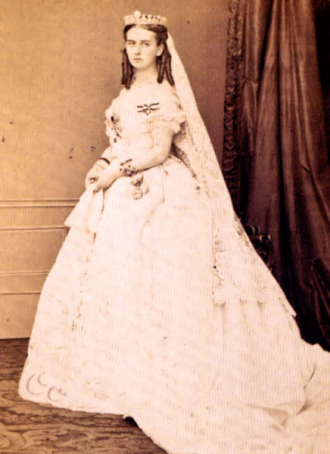

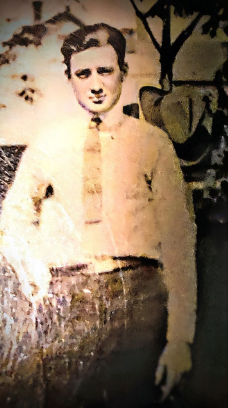




Fornbacher Family Members
Fornbacher Family Photos
Discover Fornbacher family photos shared by the community. These photos contain people and places related to the Fornbacher last name.

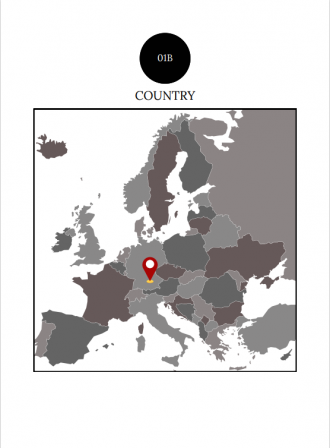
Fornbacher Family Tree
Discover the most common names, oldest records and life expectancy of people with the last name Fornbacher.
Updated Fornbacher Biographies

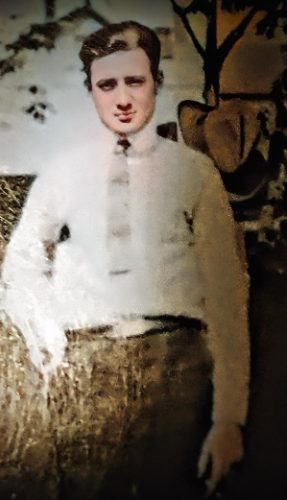

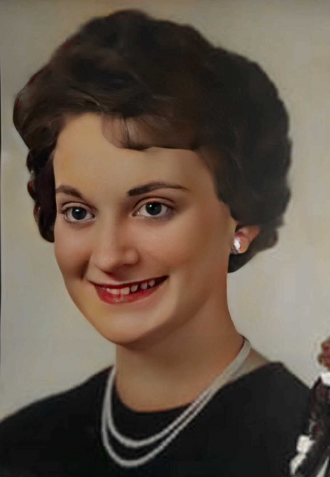








Popular Fornbacher Biographies












Fornbacher Death Records & Life Expectancy
The average age of a Fornbacher family member is 75.0 years old according to our database of 8 people with the last name Fornbacher that have a birth and death date listed.
Life Expectancy
Oldest Fornbachers
These are the longest-lived members of the Fornbacher family on AncientFaces.


Other Fornbacher Records
Share memories about your Fornbacher family
Leave comments and ask questions related to the Fornbacher family.
Followers & Sources

